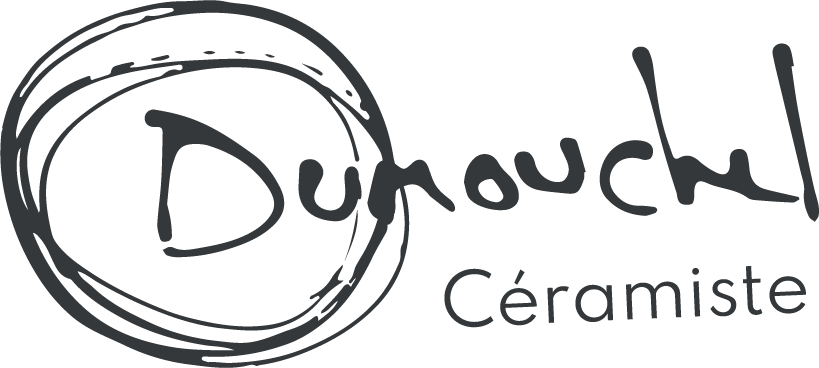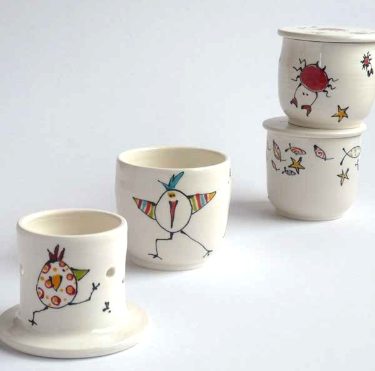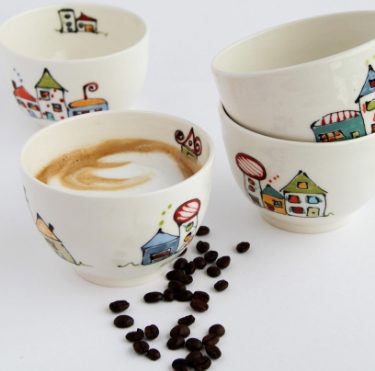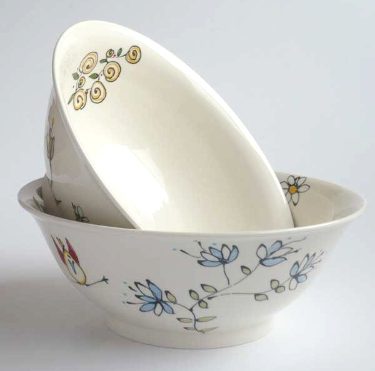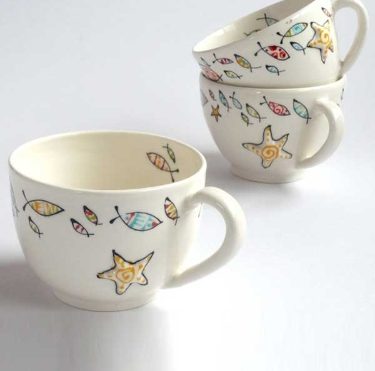Frequently asked questions (FAQ)
+ - Are Dumouchel Céramiste pieces oven-, microwave- and dishwasher-safe?
Yes, my pieces are utilitarian, for everyday use, and can be used for cooking and put in the dishwasher. Note, however, that they are sensitive to thermal shock. Be sure to place the ceramic dish in the oven before heating the latter. If the oven is already hot, warm the ceramic dish in hot water before placing it in the oven for cooking. When removing the dish from the oven, avoid placing it on a cold surface such as marble. The glazes are safe and contain no lead or toxic substances.
+ - What raw material do you use?
I use porcelain, which contains almost exclusively kaolin, a crumbly clay rock that is very white.
+ - Can you repair a broken ceramic piece?
No. You can glue the pieces back together yourself with epoxy glue, but the piece cannot be used for food as before.
In the case of a cup, the handle is glued during the manufacturing process with wet clay (slip) before drying and firing. It is therefore impossible to make a new handle if it breaks. The same principle applies to a lid. It has to be turned at the same time as the container, as the clay shrinks by about 15% during drying and firing, and this shrinkage is not consistent.
+ - Do you make pieces other than those shown on this website?
Yes, I also make lamps, teapots, baking dishes, etc., which you can find at my studio/boutique in Sainte-Anne-des-Monts (Gaspésie), as well as at some retail outlets.
+ - How did you become a ceramist?
Self-taught, I first went to a ceramics camp in Lanaudière in 1999. Afterwards, I took a four-year course in Montreal with Daniel Gingras, who became my pottery master. To become a professional potter and learn to use a wheel calls for 5 to 10 years of experience and research. I have been making pottery full time since 2005 and earning a living from my art since 2008.
+ - How long does it take to make a piece?
Nearly a month. Working with clay requires several stages of work – throwing, trimming, handle fitting (for cups), glazing and finishing – with drying time between each stage.
Then there is the firing time. Each piece generally requires 2 firings, sometimes 3. Firing times vary between 7 and 9 hours. Moreover, one piece is not enough to start a kiln; it must be filled to do a firing.
So, calculating a week to make a first piece (together with other production orders), 1 to 2 weeks of drying, the first firing, decoration, glazing and the second firing, it takes at least three weeks and can take as long as a month.
+ - Is your studio open to the public?
Yes, it is a combined studio and boutique. See the Contact and sales page for location and hours.
+ - Do you offer pottery classes?
Yes, I enjoy sharing the tricks of the trade by offering introductory pottery classes. Contact me for more information.
